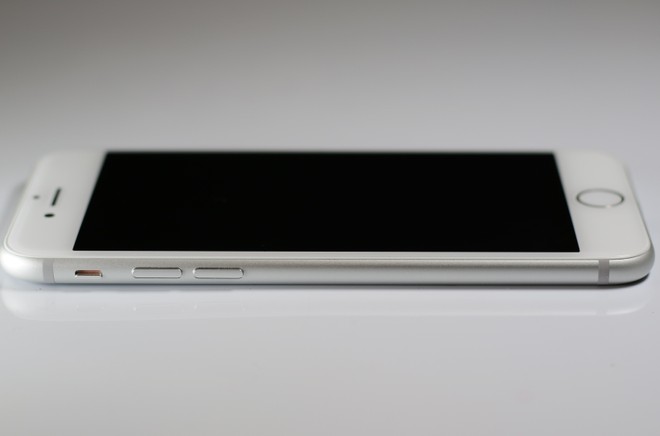After trying the “Plus” , I tried the 4.7-inch version of the iPhone 7 more thoroughly and for a few more weeks . Design almost unchanged compared to iPhone 6 and iPhone 6s but there is a double stereo speaker, a new home button, a more powerful processor, resistance to water and dust and the matt black and Jet Black colors. Let’s get to know more in our review.
Ergonomics, Materials and Hardware
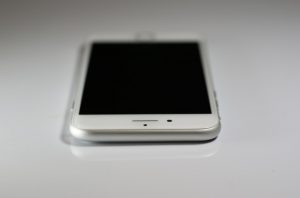
The sales package is slightly different than usual . Inside there is a 1A output charger, a USB / Lightning cable, an EarPods headset with Lightning connector and an adapter to use headphones with 3.5mm audio jack.
The design is very similar to that of the iPhone 6 with the exception of the ear capsule, which is larger to accommodate the second system speaker. The camera is shifted slightly to the left and is now 7 megapixel with stabilization.
The side keys are a little less recessed in the body and the SIM drawer has a small gasket to protect it from water and dust. The aesthetic differences are more noticeable on the lower part where the 3.5mm audio jack disappears to make room for a mostly aesthetic grid where the main microphone is positioned. The main speaker and the Lightning port remain in place.
Aesthetic novelties also on the back. The separation bands of the antennas have been partially eliminated and the camera has a softer design, protected by a part of the body. Also improves the flash which is now a 4 LED Dual Tone.
iphone 7 privacy tempered glass is water and dust resistant with IP67 certification although damage from liquids is not covered under warranty. To offer better resistance, Apple has also redesigned the home button which is now no longer clickable as usual but is able to recognize the pressure of the finger offering tactile feedback that we can customize by choosing between three different levels of intensity. The button is capacitive and cannot be clicked with objects or if we are wearing traditional gloves.
The processor is a 64-bit A10 Fusion with M10 motion coprocessor and supported by 2GB of RAM. The Apple A10 Fusion is a high-efficiency quad core with two more powerful cores, used when higher performance is required, and two low-energy cores used for basic operations. In everyday use, these improvements are not very marked and are particularly noticeable in the speed of opening applications.
Compared to the previous generation, the 16GB memory cut finally disappears, replaced by the 32GB one. We then move on to the 128GB and 256GB cuts. About 6GB are occupied by system files.
Display
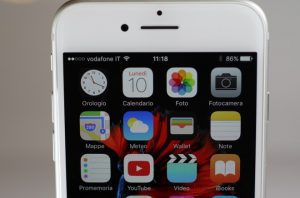
The display remains 4.7 inches diagonal with a resolution of 1334×750 pixels and a density of 326 ppi.
Although identical to the past, this panel supports the DCI-P3 color gamut which allows for wider reproduction than the sRGB standard. The differences are noticeable when compatible content is played.
Very wide viewing angles, high contrast and excellent color balance are among the strengths of this display which also supports 3D Touch for the recognition of the intensity of finger pressure.
Battery, Audio and Reception
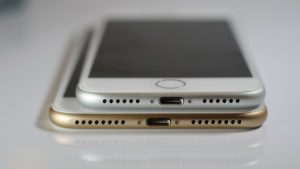
The better energy efficiency of the processor, combined with an increase in battery capacity, now from 1960 mAh, allow to significantly increase the autonomy compared to the iPhone 6s. On average, I got 16 hours of standby time with about 6/7 of use. The iOS platform offers a power saving system that limits the performance and functionality of the iPhone slightly.
Good, not excellent audio quality both through the ear capsule, full-bodied and with a high volume, and through hands-free that can benefit from both system speakers. No problem with regards to the reception of the cellular network signal and Wi-Fi. The LTE module now supports a maximum download speed of up to 450Mbps.
Also Read: How To Install Latest McAfee Antivirus Plus
Camera and Multimedia
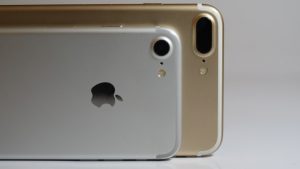
The rear camera has been renewed and remains 12 megapixel in 4: 3 ratio but is enriched with the optical stabilizer . The diaphragm has an aperture of ƒ / 1.8 and the lens is six elements. There is also the possibility of taking “live photos” and recording videos in time-lapse and slow motion (1080p at 120 fps; 720p at 240 fps). The maximum resolution of the videos is 4K at 30fps.
In general the photos are of high quality, offer excellent detail and white balance and also the colors are well reproduced. Photos taken in more difficult lighting conditions are better than in the past. Thanks to iOS10 there is also the possibility to take images in the RAW format using third-party applications.
Multimedia “penalized” by a display not particularly large but certainly improved thanks to a double stereo speaker that offers both good quality and high volume.
Conclusions
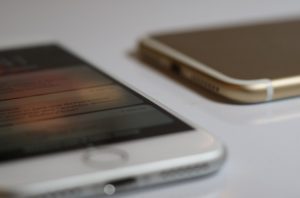
In conclusion, as mentioned for the iPhone 7 Plus , I would define this iPhone 7 as a plus an “S version” of the iPhone 6s , a phone that improves further compared to previous generations but maintains a design that, even if still pleasant, sees in the new ones colors the real novelty (for the Jet Black you will have to choose between 128GB and 256GB of integrated memory).
The performance improves, certainly a plus, as are the audio quality, the resistance to water and dust and the photographic part. The ease of use with one hand remains among the main reasons to choose it. Among the negative points the very high price (starting from 799 euros) and the absence of the 3.5mm audio jack that will force us to use adapters with other wired headphones or if we want to listen to music while recharging. After a prolonged period of use I must say that I preferred the “old” home button.

